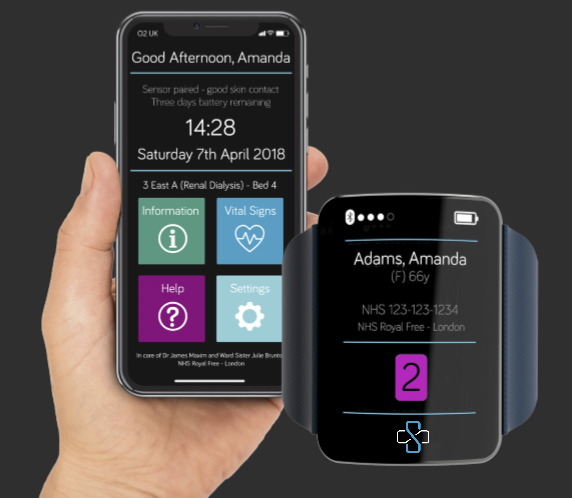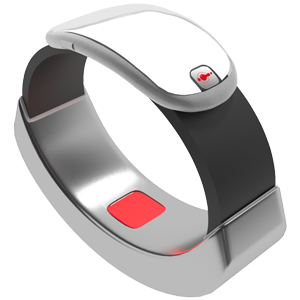Surging healthcare costs driven by a rise in chronic diseases necessitated innovative technology’s positioning in healthcare. Integration of the Internet of Things, cloud computing and big data technologies have paved the way for Remote Patient Monitoring, which is gaining prominence in the present landscape of a pandemic. A significant breakthrough has been in patient health monitoring platforms and smart devices which have real-time patient data collecting capabilities, enabling healthcare providers to continue the assessment of patients remotely. As Arab Health’s online focus days commence, renowned and award-winning speakers took centre stage to speak about the shifting paradigms in healthcare and its future. Innov8 talks followed suit introducing industry stakeholders to key disruptors such as Waire Health and GlucoActive, which enable patients to self-monitor.
The future of consumer wearables
Technology has been leveraged to provide healthcare stakeholders with effective solutions. This has led to an increase in the demand for a variety of commercial home and wearable health monitors. According to an article published in the journal of Biomedical Optics, these include, but are not limited to glucometers, digital stethoscopes, mobility trackers, blood pressure monitors and electrocardiograms. In 2019, the consumer wearables market, which includes health trackers like the Fitbit and Apple Watch, generated nearly US$19 billion in revenue. Accelerometers and photoplethysmography (PPG) are used in small, wrist-worn wearables to track mobility and heart rate. With the inclusion of multiwavelength optical sensors and electrical impedance sensors, newer models may track additional parameters such as peripheral arterial oxygen saturation and electrical impulses from the heart (ECG). The adoption of these consumer wearables in the healthcare space is beginning to impact clinical study design and healthcare delivery.
Innovations in the pipeline
Waire Health

Source: Waire health, https://www.waire.health/medicalgrade
Waire Health builds state-of-the-art wearable vital signs monitors that offer consumer levels of usability with medical-grade accuracy. These provide an end-to-end solution for doctors, nurses, administrators, procurers, carers and can be used offline. “Our monitors work for patients in hospitals and in their homes post-discharge, we offer an end-to-end solution, not just a monitoring device. Today, the telehealth industry has suffered supplying several disparate connected devices to patients and it's not realised that they lacked consumer levels of usability. Accurate vital signs are fundamental to any clinical decision. In 2017, the EU attempted to build the next generation of vital signs monitors, 198 companies applied, and our sensor product made it to the final four before COVID-19 hit,” says Dave Hurhangee, CEO.
In addition, C-Detect, a device that alerts users to get tested to reduce the spread of COVID-19 is presently in the wings. “As a winner of the IIT digital token tracing project, we will also have international talking tracing capability added to the device by November. The market for C-Detect is large, especially in a global pandemic,” adds Hurhangee. The device is autonomous and works off-grid, without routers or hubs, with the sensor warning the wearer to seek assistance if they are unconnected. It also calculates blood pressure accurately without an inflatable cuff and has a continuous ECG integration.
GlucoActive

source: GlucoActive, https://gluco-active.com/glucowear/
The World Health Organization reports that 10 per cent of the global population suffers from diabetes, with 422 million patients globally. “Up to 20 per cent of the population is undiagnosed, this leads to almost 3.7 million deaths yearly. The huge social impact is also reflected in the value of our market. Studies relay that the down value of European blood glucometer market is worth around US$2 billion. When you look at the global glucometer market, it is over US$22 billion. There are two main reasons behind the problem of blood glucose myenteric, one that it is painful, and secondly, people feel the fear of diagnostics,” says Robert Stachurski, co-founder, and CEO of GlucoActive.
GlucoActive uses noninvasive laser light which penetrates the skin and reacts only with the glucose molecules. By measuring the intensity of the signal, the blood glucose concentration can be evaluated. “We have currently free versions of the devices in the pipeline, stationary for professional use, like hospitals and medical facilities and the other which can be worn by patients, sports enthusiasts or by people who want to take care of their health.”
Currently, the non-invasive glucometer developer’s technology is secured with two billable PCT button submissions and other developments are on the way. Its operational devices have passed clinical trials and are undergoing the medical certification process. “The glucose station device is the first device that we are currently preparing for the production and commercialisation. The second device that will be commercialised is GlucoWear, a wearable armband offering mobility and continuous monitoring. Our goal for the future is to achieve higher accuracy than the laboratory tests, which is below 8 per cent,” he states.
Prevalence in digital transformation
Migration towards smart systems has also impacted traditional clinic settings – continuous patient monitoring has always been essential in the intensive care unit (ICU) for detecting critical changes in patients' health statuses and guiding therapy. The use of digital health technologies to monitor patients have proven beneficial in improving patient safety. Healthcare stakeholders are focused on promoting a rapid and sustainable implementation of digital health solutions in the ICU through user derived findings. The findings from the alarm management or mobile device studies could be used to train the ICU staff to use new technology, reduce alarm fatigue, improve medical device usability, and advance interoperability standards in intensive care medicine. Increasing the trust and awareness of ICU staff in digital health technology may be a prerequisite for digital transformation in healthcare.

